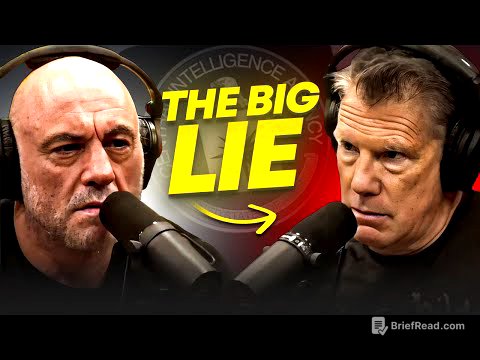TLDR;
This video features a discussion about investment strategies, market analysis, and historical economic contexts. The speaker emphasizes the importance of fundamental research, observing real-world trends, and not overcomplicating investment decisions. They also touch on the current AI boom, value investing, and the resilience of the modern economy compared to the Great Depression era.
- Focus on company fundamentals rather than macroeconomic forecasts.
- Look for opportunities in unglamorous or troubled companies with potential for improvement.
- The modern economy has built-in buffers that make a repeat of the Great Depression unlikely.
Introduction [0:00]
The speaker opens by addressing the common investor anxiety about market corrections, noting that more money is often lost in anticipation of corrections than in the corrections themselves. They highlight the difficulty of accurately predicting market movements and economic forecasts, suggesting that even experts are frequently incorrect. The key is to have winning stocks that offset mistakes, a strategy the speaker's firm has employed for 70 years.
The Futility of Over-Analyzing Economic Forecasts [1:08]
The speaker expresses skepticism towards spending excessive time on economic and market forecasts, suggesting that more than 13 minutes of analysis is a waste of time. They admit to not knowing what the future holds and prefer to focus on current, tangible data such as used car prices and oil prices. They cite the example of Chrysler, which was wrongly predicted to go bankrupt despite having sufficient cash reserves.
The Power of Fundamental Research and Observation [2:54]
The speaker underscores the importance of thorough research, using the analogy of a geologist finding value by examining many rocks. They advocate for looking at a large number of stocks to find mispriced opportunities. They emphasize that behind every stock is a company, and it's crucial to understand what that company is doing. Real-life observations, such as shopping habits, can provide valuable insights, but using a product doesn't automatically make its stock a good investment.
Simplicity vs. Complexity in Investing [5:08]
The speaker asserts that a portfolio of well-chosen stocks or mutual funds can outperform complex investment strategies. They share a story about identifying the success of Hanes' "Legs" pantyhose by observing their sales in supermarkets. They also recount buying 65 pairs of "No Nonsense" pantyhose to evaluate their quality, demonstrating the lengths to which they go for fundamental research.
The Potential for Part-Time Investors [5:45]
The speaker believes that individuals can still succeed in the stock market on a part-time basis, even with the prevalence of sophisticated tools and data. They recall their personal experience with Apple in the early 2000s, noting how the iPod's success financed the iPhone. They admit to not being tech-savvy and having no AI stocks, preferring to use simple tools like yellow pads and a phone.
Avoiding Glamorous Stocks and Finding Value in Troubled Companies [7:57]
The speaker advises against chasing glamorous stocks and favors companies in salvageable situations that are out of favor. They cite Waste Management as a successful example, as few investors were interested due to its association with garbage and the mafia. They highlight the potential for significant returns when a company goes from losing money to making money, even if the industry is struggling.
The Value of Independent Thinking [10:15]
The speaker encourages investors not to be intimidated by professionals and to trust their own judgment. They quote Warren Buffett's analogy of Wall Street, where people take a Rolls-Royce to get advice from someone who takes the subway. They advocate for buying stocks of companies expected to improve in the next two to three years, even if the immediate future is uncertain. They also suggest looking at stocks on the new low list, as some may be undervalued opportunities.
Large Cap Stocks and Future Market Returns [12:46]
The speaker addresses concerns about high multiples in large-cap stocks, using Costco and Walmart as examples. Despite their high valuations, they emphasize that these companies can continue to grow. They recount how McDonald's expanded successfully into Europe, defying expectations that its growth was limited. The key is to look at the facts and potential for future growth, regardless of past success.
Meme Stocks and the Modern Investor [15:18]
The speaker acknowledges the reckless aspects of the meme stock phenomenon but notes its positive outcome of bringing millions of new, younger investors into the market. They contrast the current market with the conditions of the Great Depression, highlighting the existence of social security, unemployment compensation, and the SEC as crucial buffers. They point out that homeownership is more prevalent now, providing a significant source of wealth for many Americans.
Economic Resilience and the Unlikelihood of a "Big One" [15:52]
The speaker argues that the modern economy has evolved to the point where a repeat of the Great Depression is unlikely. They cite the numerous recessions since then, none of which have been as severe. They emphasize the various cushions in place, such as widespread homeownership and careful savings habits. Despite facing bad presidents, congresses, and economists, the system has proven resilient.









